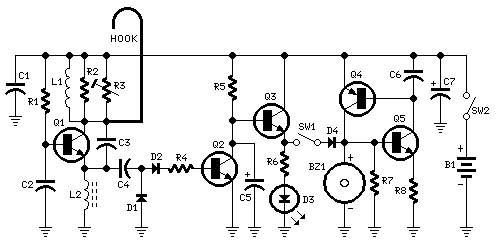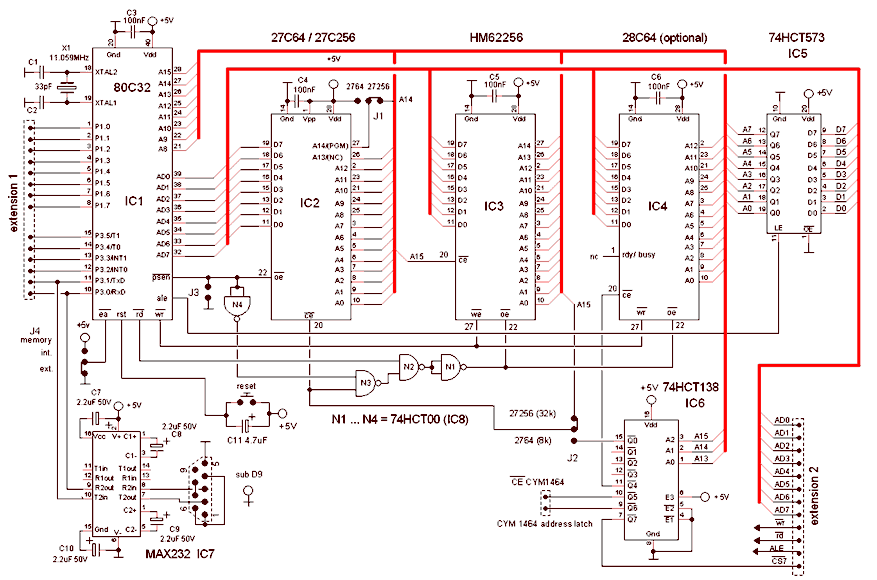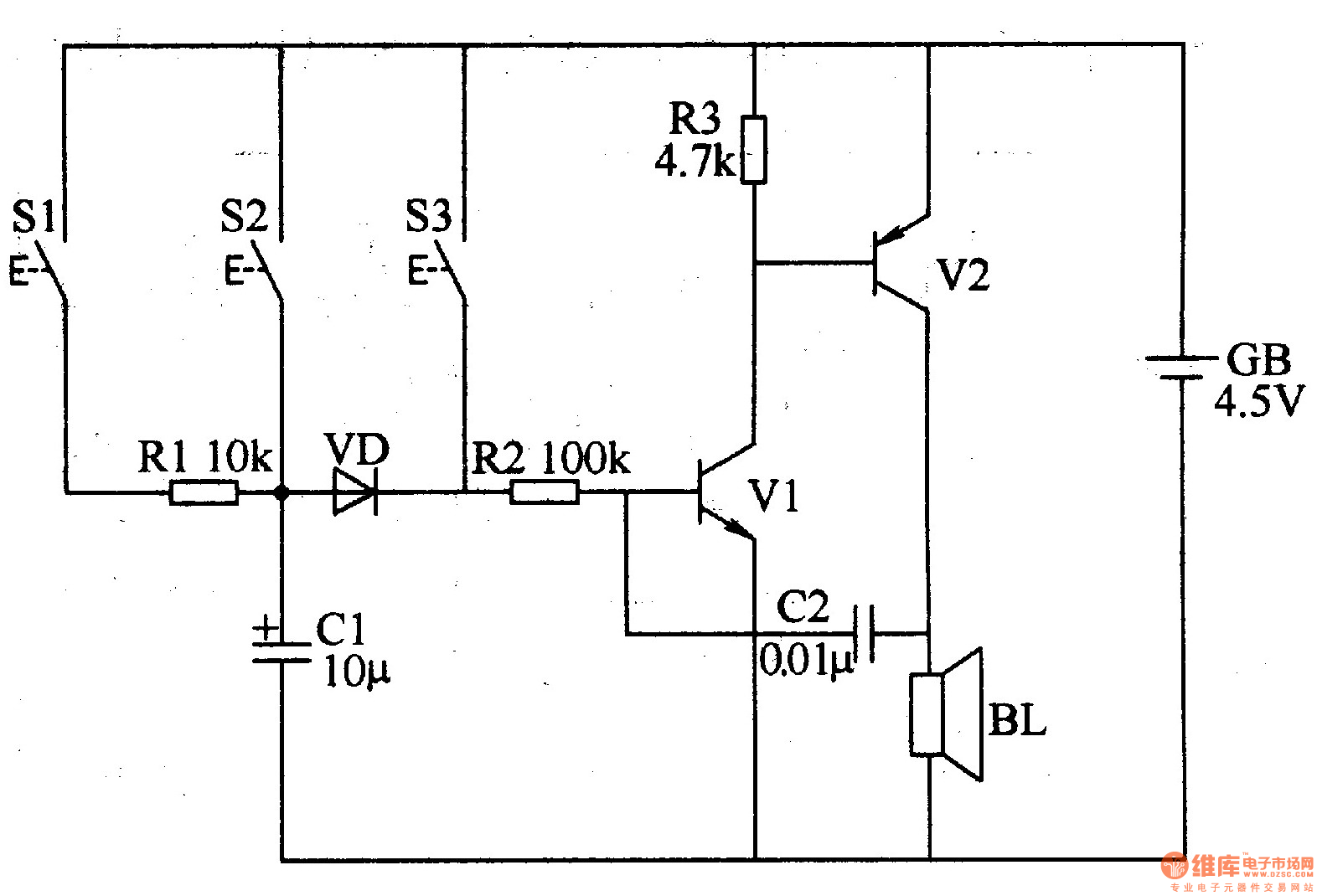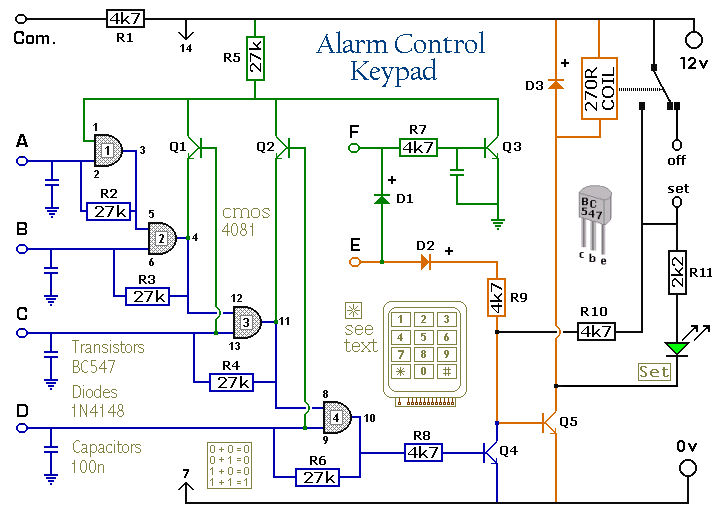
Door Alarm

This circuit emits a beep and/or illuminates a LED when someone touches the door-handle from the outside. The alarm will sound until the circuit will be switched-off. The entire circuit is enclosed in a small plastic or wooden box and should be hanged-up to the door-handle by means of a thick wire hook protruding from the top of the case. A wide-range sensitivity control allows the use of the Door Alarm over a wide variety of door types, handles and locks. The device has proven reliable even when part of the lock comes in contact with the wall (bricks, stones, reinforced concrete), but does not work with all-metal doors.
The described circuit functions as a touch-sensitive door alarm, designed to enhance security by alerting users to unauthorized access attempts. The core of the circuit relies on a touch sensor, which detects the capacitance change when a person touches the door handle. This sensor is typically a capacitive touch switch, which is sensitive to the presence of a human hand.
When the sensor is activated, it triggers a microcontroller or a simple transistor-based circuit that drives an audible alarm, usually a piezo buzzer, and a visual alert, such as an LED. The microcontroller can be programmed to manage the duration of the alarm and to control the LED's flashing pattern, providing both auditory and visual signals of intrusion.
The sensitivity control feature is crucial for accommodating various door types and environmental conditions. This is often implemented using a variable resistor (potentiometer) that adjusts the threshold at which the sensor activates. Proper calibration is necessary to ensure that the alarm does not trigger from incidental contact or environmental factors, such as wind or vibrations.
The enclosure of the circuit is designed to be compact and unobtrusive, allowing it to be mounted on door handles without being overly conspicuous. The use of a thick wire hook provides a secure attachment to the door handle, ensuring that the device remains in place during operation.
It is important to note that the circuit's effectiveness may be compromised with certain materials, particularly all-metal doors, which can interfere with the capacitive sensing mechanism. Therefore, it is advisable to evaluate the installation environment before deployment. The device's reliability in various conditions, such as contact with walls made of bricks or reinforced concrete, underscores its versatility and robustness for home security applications.This circuit emits a beep and/or illuminates a LED when someone touches the door-handle from the outside. The alarm will sound until the circuit will be switched-off. The entire circuit is enclosed in a small plastic or wooden box and should be hanged-up to the door-handle by means of a thick wire hook protruding from the top of the case.
A wide-range sensitivity control allows the use of the Door Alarm over a wide variety of door types, handles and locks. The device has proven reliable even when part of the lock comes in contact with the wall (bricks, stones, reinforced concrete), but does not work with all-metal doors.
🔗 External reference
The described circuit functions as a touch-sensitive door alarm, designed to enhance security by alerting users to unauthorized access attempts. The core of the circuit relies on a touch sensor, which detects the capacitance change when a person touches the door handle. This sensor is typically a capacitive touch switch, which is sensitive to the presence of a human hand.
When the sensor is activated, it triggers a microcontroller or a simple transistor-based circuit that drives an audible alarm, usually a piezo buzzer, and a visual alert, such as an LED. The microcontroller can be programmed to manage the duration of the alarm and to control the LED's flashing pattern, providing both auditory and visual signals of intrusion.
The sensitivity control feature is crucial for accommodating various door types and environmental conditions. This is often implemented using a variable resistor (potentiometer) that adjusts the threshold at which the sensor activates. Proper calibration is necessary to ensure that the alarm does not trigger from incidental contact or environmental factors, such as wind or vibrations.
The enclosure of the circuit is designed to be compact and unobtrusive, allowing it to be mounted on door handles without being overly conspicuous. The use of a thick wire hook provides a secure attachment to the door handle, ensuring that the device remains in place during operation.
It is important to note that the circuit's effectiveness may be compromised with certain materials, particularly all-metal doors, which can interfere with the capacitive sensing mechanism. Therefore, it is advisable to evaluate the installation environment before deployment. The device's reliability in various conditions, such as contact with walls made of bricks or reinforced concrete, underscores its versatility and robustness for home security applications.This circuit emits a beep and/or illuminates a LED when someone touches the door-handle from the outside. The alarm will sound until the circuit will be switched-off. The entire circuit is enclosed in a small plastic or wooden box and should be hanged-up to the door-handle by means of a thick wire hook protruding from the top of the case.
A wide-range sensitivity control allows the use of the Door Alarm over a wide variety of door types, handles and locks. The device has proven reliable even when part of the lock comes in contact with the wall (bricks, stones, reinforced concrete), but does not work with all-metal doors.
🔗 External reference





